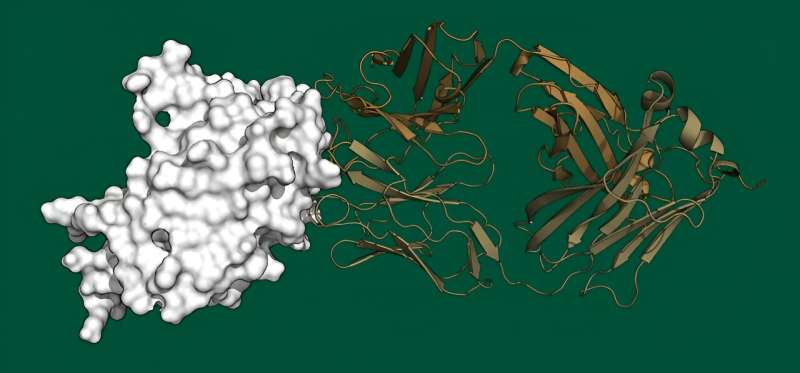This article has been reviewed according to Science X's editorial process and policies. Editors have highlighted the following attributes while ensuring the content's credibility:
fact-checked
preprint
trusted source
proofread
Using AI, bird flu study shows greater antibody evasion in newer H5N1 strains

In a new study led by UNC Charlotte researchers from the Center for Computational Intelligence to Predict Health and Environmental Risks (CIPHER) and the North Carolina Research Campus at Kannapolis, University scholars have found evidence that the latest variants of H5N1 influenza—commonly known as avian or bird flu—are better at evading antibodies, including those of humans, than previous iterations of the virus.
The study is currently published on the online bioRxiv preprint server.
In June 2024, the U.S. Department of Agriculture reported that more than 300 mammals had been found to have been infected with the H5N1 virus between 2022 and 2024. The World Health Organization recently reported that approximately five humans have been infected with H5N1 in 2024 alone, "but the broader potential impact to human health remains unclear," the UNC Charlotte researchers wrote.
Using advanced AI and physics-based modeling techniques made possible by UNC Charlotte and the North Carolina General Assembly investments in high-performance computing research and artificial intelligence-assisted computational analysis, University researchers have made strides in understanding the specific interactions between H5N1 virus proteins and antibodies, with the goal that these findings will inform the design of stronger, more effective vaccines for the virus.
This project was led by first author Colby T. Ford, a CIPHER visiting scholar in data science and founder of Charlotte-based startup, Tuple, LLC, along with recent College of Computing and Informatics students Shirish Yasa, Khaled Obeid and Sayal Guirales-Medrano, as well as Department of Bioinformatics and Genomics professors Richard Allen White III and Daniel Janies. Tuple, LLC was also a partner in this project.
"Historically, our ability to answer biological questions was limited to the throughput of our traditional lab-based processes. Today, however, through the seemingly limitless scale of high-performance and cloud computing, we employ AI and other modeling tools to answer such questions computationally," said Ford. "In this study, our aim is to be more forward looking to predict the potential health impacts of H5N1 influenza before a major event catches us off guard."
Building off of CIPHER's previous SARS-CoV-2 research on coronavirus variants and their ability to evade antibodies, this study is based on data pulled from 1,804 computational experiments as well as an in-depth phylogenetic analysis of 18,508 protein sequences of H5N1 collected between 1959 and 2024. CIPHER scholars also visualized the geographic and host shifts found throughout H5N1's history.
According to the study, virus mutations related to "host-shifts" from birds to mammals had a statistically significant negative impact on the ability of antibodies to bind to and fight off H5N1. Researchers also found that based on the wide variety of host species and geographic locations in which H5N1 was observed to have been transmitted from birds to mammals, there does not appear to be a single central reservoir host species or location associated with H5N1's spread.
This indicates that the virus is well on its way to moving from epidemic to pandemic status in the near future.
This study is the latest example of UNC Charlotte's efforts to put advanced computational research methods to use toward better understanding and fighting infectious diseases across the globe.
"We are entering a whole new era of molecular epidemiology in which we provide a functional insight above and beyond disease surveillance." said Janies, CIPHER co-director and the Carol Grotnes Belk Distinguished Professor in Bioinformatics and Genomics.
"We demonstrate that large data sets can be analyzed rapidly with high-performance computing and artificial intelligence to assess our preparedness for important problems such as H5N1, which is spreading rapidly to new hosts and regions including American cattle and farmworkers."
"H5 related avian influenza A is an emerging pathogen in humans while being an ongoing pandemic in wildlife for over two years," said White, Assistant Professor of Bioinformatics. "Our predictive study provides a window to the future of using AI in the arms race against emerging pathogens."
More information: Colby T. Ford et al, Large-Scale Computational Modeling of H5 Influenza Variants Against HA1-Neutralizing Antibodies, bioRxiv (2024). DOI: 10.1101/2024.07.14.603367
Journal information: bioRxiv
Provided by University of North Carolina at Charlotte




















